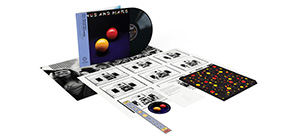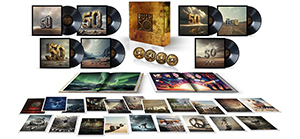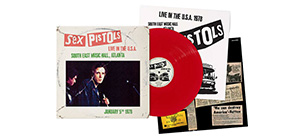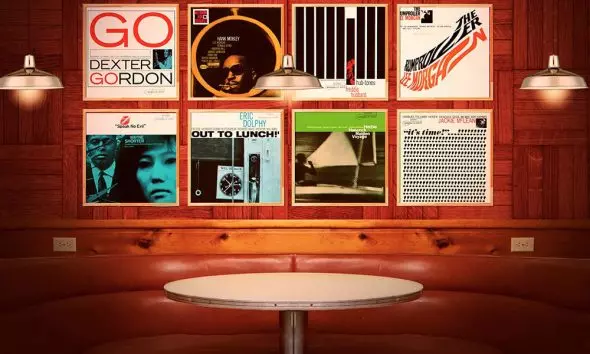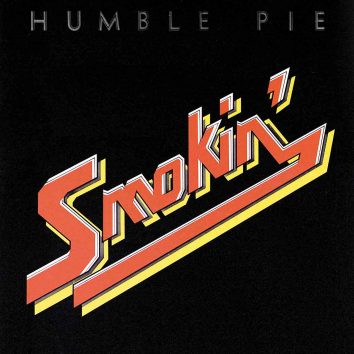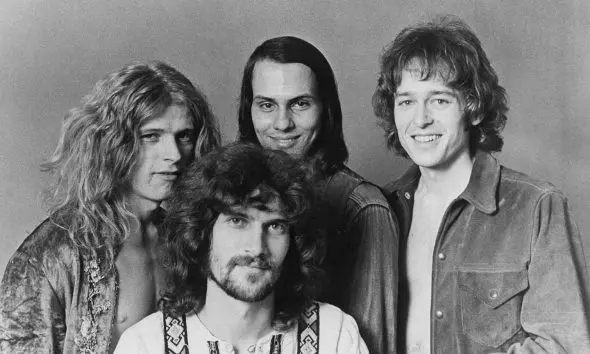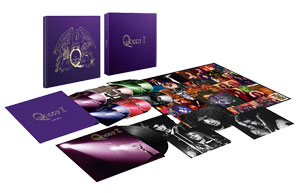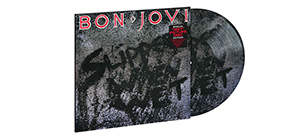How Movie Soundtracks Changed Forever in the ’80s
The marriage between music and movies that occurred in the ‘80s was a relationship that set the tone for everything in its wake.
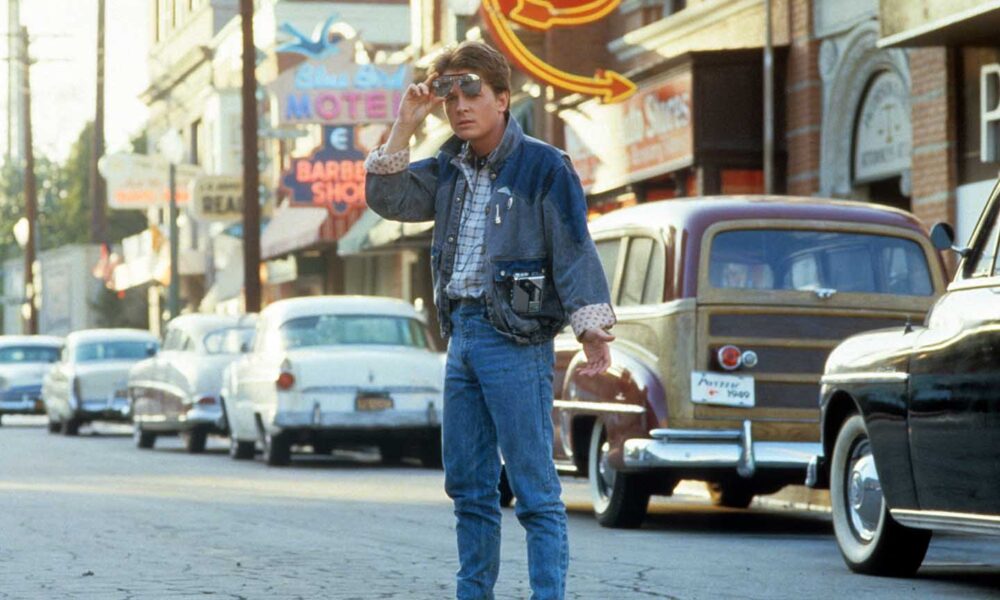
Just as the 1980s irrevocably altered the way movie soundtracks work, the films of that decade shaped musical tastes more than ever before.
Sure, the preceding decades brought us game-changers like Blackboard Jungle, Easy Rider, Shaft, etc., but in the 1980s it was almost as if there were shuttle buses taking moviegoers from the theater to the record store to frantically scarf up the tunes the latest cinematic smash had just lodged in their brains, swiftly turning the tracks into Top 40 fodder.
Buy the best 1980s movie soundtracks on vinyl now.
Some of the period’s most influential artists got even bigger by contributing songs to the right soundtracks. And some acts might never have broken through at all if it hadn’t been for the films that featured their music. Whether we’re talking about electronic music, R&B, new wave, or pure pop, the marriage between music and movies that occurred in the 1980s was a relationship that set the tone for everything in its wake.
Nostalgia buzz
It wasn’t only new tunes that 1980s films injected into the cultural consciousness. Just as American Graffiti helped spur the ‘50s rock ‘n’ roll revival in the ‘70s, the ‘80s fetish for ‘60s nostalgia got its biggest boost from the silver screen. Through the device of Robin Williams’ role as a U.S. Army DJ, 1987’s Good Morning Vietnam put ‘60s rock, pop, and soul hits to the fore, from The Beach Boys’ “I Get Around” to Louis Armstrong’s “What a Wonderful World.” And as a period piece set in the 1963 Catskills, Dirty Dancing included plenty of tunes inextricably linked to those times.
But 1983’s The Big Chill beats all competitors as the first huge cinematic engine putting ‘60s music back into the cultural conversation. The story, centered on a group reuniting to mourn the passing of a friend, sets things up perfectly for a soundtrack dripping with Motown hits and classic rock staples. From the film’s first moments, where The Rolling Stones’ “You Can’t Always Get What You Want” plays at the funeral, The Big Chill simultaneously played off of Boomers’ recent arrival at middle age and introduced the sounds of the ‘60s to a new generation.
The bespoke approach
The vast majority of 1980s soundtracks took a bespoke approach, reaching out to some of the most popular acts of the day for sonic adornment. In the process, the 1980s charts swelled up with more movie-derived hits than any earlier decade.
Kenny Loggins was the uncontested top dog of the phenomenon, taking tunes that he sang for Footloose, Top Gun, and Caddyshack to pop immortality. Even Prince took a soundtrack turn, scoring big in ‘89 with his music for Batman. Sometimes turning out a custom-made song for a soundtrack could put an artist over the top—Ray Parker Jr. had a No. 1 hit with his 1984 theme for Ghostbusters.
And even though Huey Lewis & The News were already riding pretty high before they got involved with 1985’s Back to the Future, the song they wrote and performed for what turned out to be that year’s runaway box office hit put them on top right along with it. The tune almost never got written—when director Bob Zemeckis and producer Steven Spielberg asked Lewis to dream up a theme, he said he didn’t have any ideas for a song called “Back to the Future.” But they told him that wasn’t a requirement and he could just give them whatever his next composition turned out to be. The result was the band’s first (but far from last) chart-topper, the hard-charging “The Power of Love.” Huey even has a cameo in the movie, axing Michael J. Fox’s Marty McFly from auditions for the high school prom when Fox starts playing his own take on the tune.
Synth fever
Synthesizers were an integral part of the 1980s musical mainstream. Acts like The Human League, Soft Cell, Eurythmics, Tears for Fears, and Naked Eyes brought the British synth-pop revolution to U.S. radio and MTV, making electronics a ubiquitous presence.
But there was a spate of European synth jockeys who might never have turned into major pop concerns if it weren’t for the 1980s soundtracks that took them into the hearts of American audiences. Greek electro-wizard Vangelis had spent the ‘70s establishing himself as a progressive electronic auteur, with a series of albums that made him an underground hero. But before he wrote his richly romantic theme for 1981’s Chariots of Fire, no one would have ever imagined that an instrumental tune from a film about British athletes in the 1920s Olympics could become a No. 1 pop hit.
German synth legends Tangerine Dream made a similar, albeit less dramatic, jump from ‘70s prog cult-hero status to the American mainstream when they scored 1983’s Risky Business, the film that made Tom Cruise a star. Especially when their hypnotic, sequencer-driven tune “Love on a Train” became the backdrop for a steamy, classic scene between Cruise and Rebecca De Mornay.
It was another young star’s breakout film that endeared America to Swiss electronic duo Yello, whose skittering, screwy “Oh Yeah” became a U.S. dance hit thanks to Ferris Bueller’s Day Off. And despite successful work on the scores for Midnight Express and American Gigolo, it’s unlikely that German composer Harold Faltermeyer could have become an international pop sensation if 1984’s Beverly Hills Cop hadn’t included the tune that launched a thousand breakdances: synthtastic electro-pop/hip-hop merger “Axel F.”
The tastemaker
If there were ever an 1980s movie soundtrack museum, John Hughes’ work would have its own wing. In the same way that the films he produced, wrote, and/or directed tapped into what it felt like to be a young person in search of oneself in those days, they were full of new songs that were totally in tune with their times.
Granted, much of the music from those films was chosen by music supervisor and former A&R man Tarquin Gotch, who also compiled the bulk of it onto the 2022 box set Live Moves Pretty Fast: The John Hughes Mixtapes. But if Hughes hadn’t helped bring ‘80s classics like The Breakfast Club, Pretty in Pink, Some Kind of Wonderful, Weird Science, and Ferris Bueller’s Day Off into being, such songs as Oingo Boingo’s “Weird Science,” Flesh for Lulu’s “I Go Crazy,” and General Public’s “Tenderness” would never have been burned into our hearts and minds the way they were.
Whether it’s OMD’s “If You Leave” backdropping the romantic triangle playing out between Molly Ringwald, Jon Cryer, and Andrew McCarthy in the prom scene that closes Pretty in Pink, or Simple Minds’ “Don’t You (Forget About Me)” adding a triumphant tone to the ending of The Breakfast Club, the Hughes movies were full of sounds synonymous with their subjects. And for little-known bands like the short-lived Lick the Tins, whose Celtic-tinged reboot of the Elvis Presley standard “Can’t Help Falling in Love” is the music behind the heart-grabbing ending of Some Kind of Wonderful, the Hughesverse provided their only brush with fame.
Music/movie tie-ins turned exponentially bigger and bolder in the decades that followed, but the template for it all took shape in a time that’s too often swept under the rug when we could be embracing it anew.




